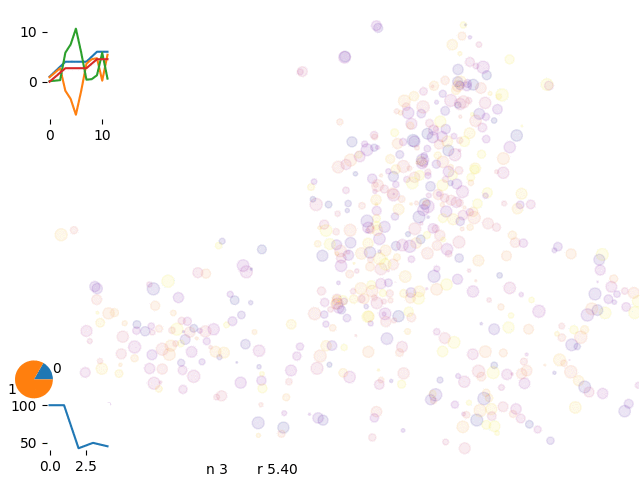 optimization 8 vans
optimization 8 vansOptimization is finding one optimal configuration for a given system
 optimization 8 vans
optimization 8 vans
We have to find the most efficient distribution tasks among drivers to minimize costs and maximize revenue
optimization problem
We need to reduce the drive time and focus on most interesting spots
We first add all the spots a van could see and we calculate the most optimal route connecting the spots
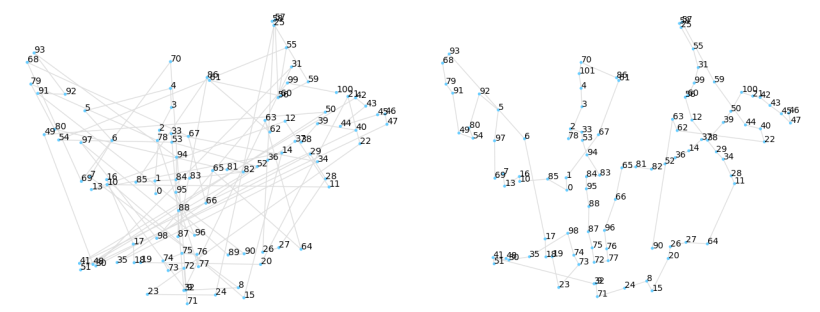
spot connection
Prediction should define the layers where we are most confident about the revenues for a given time and weather condition
We define the revenue as:
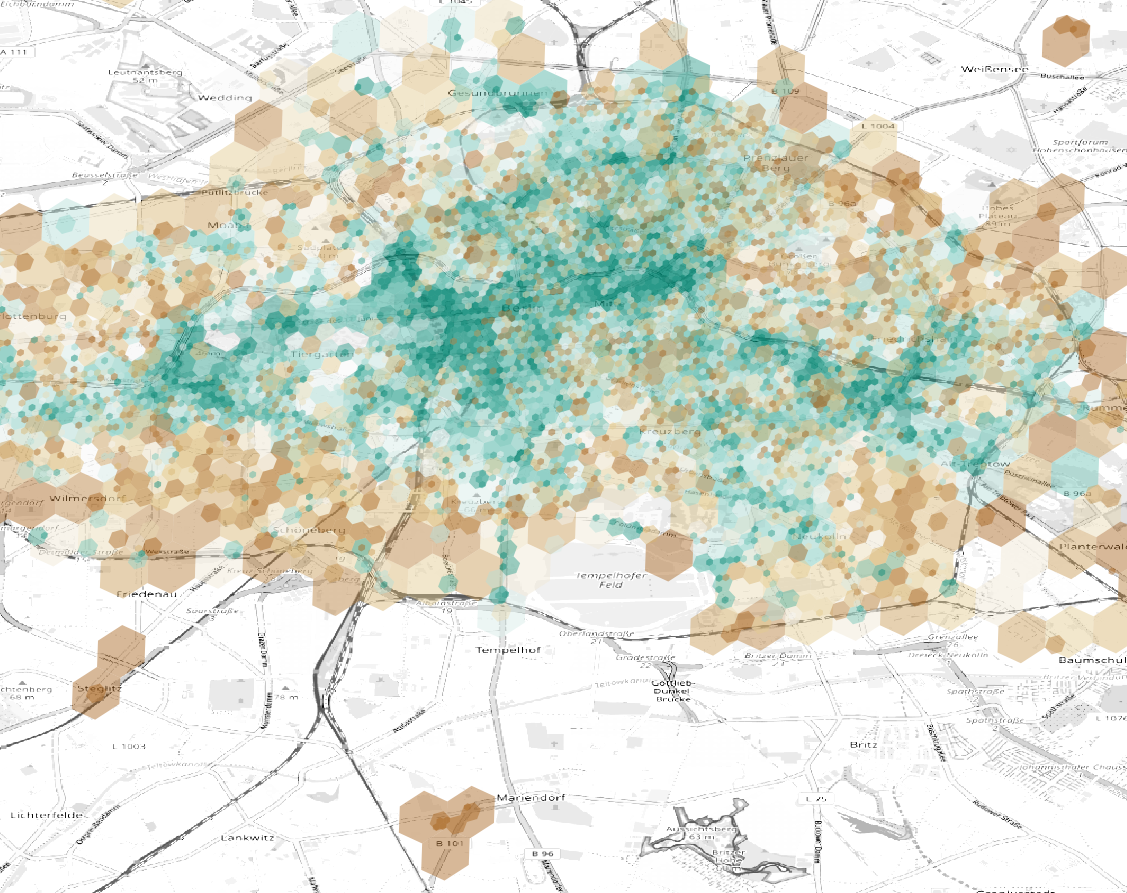
potential of that area for a given weekday and shift number
μdeployndeployEdeploy + μcollectncollectEcollect
Where μ is the potential to add or remove a scooter at a certain spot, E is the revenue per scooter, n is the number of scooters
and the costs as:
lrideclenght + nstopscstops
Where l is the lenght, n the number of stops and c empirical parameters.
The energy calculation considers the single paths and the interaction among them:
We display the interdepency
We can toggle the activation of the spot and recalculate the energy and apply the Metropolis algorithm to see whether the move is convenient
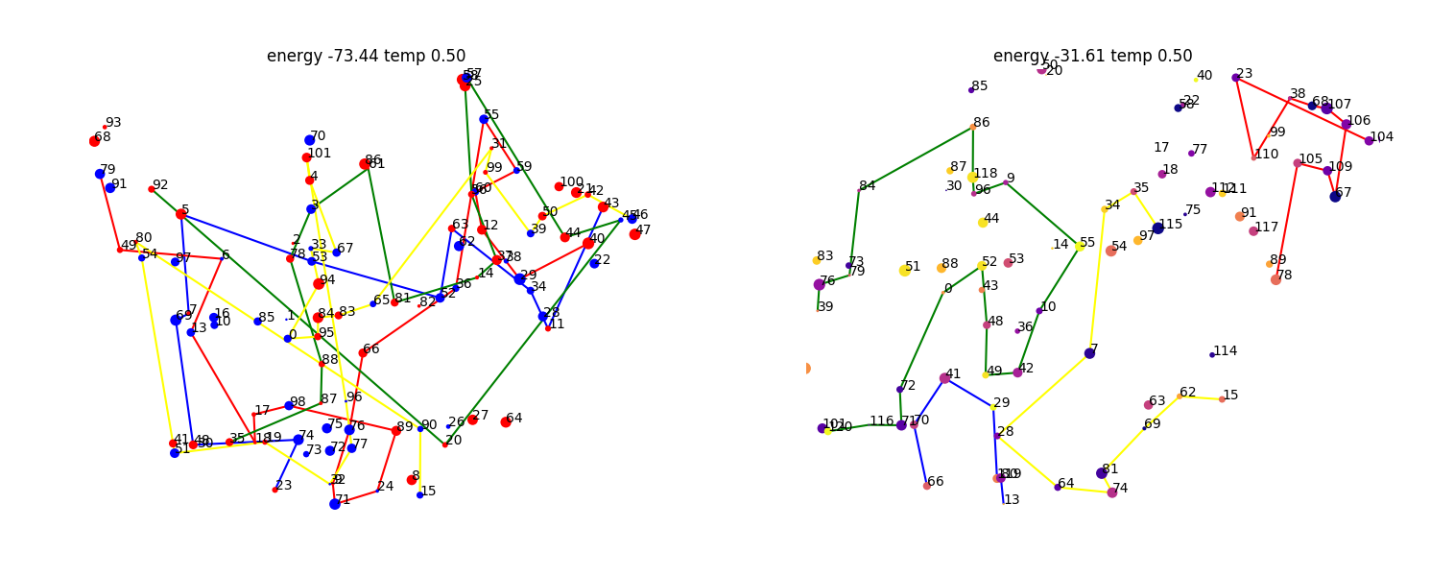
optimization graph
The total energy of the system decreses
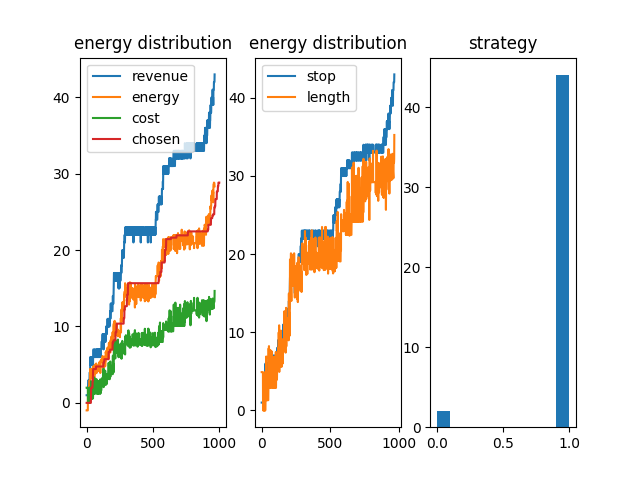
optimization energy
We consider a larger system
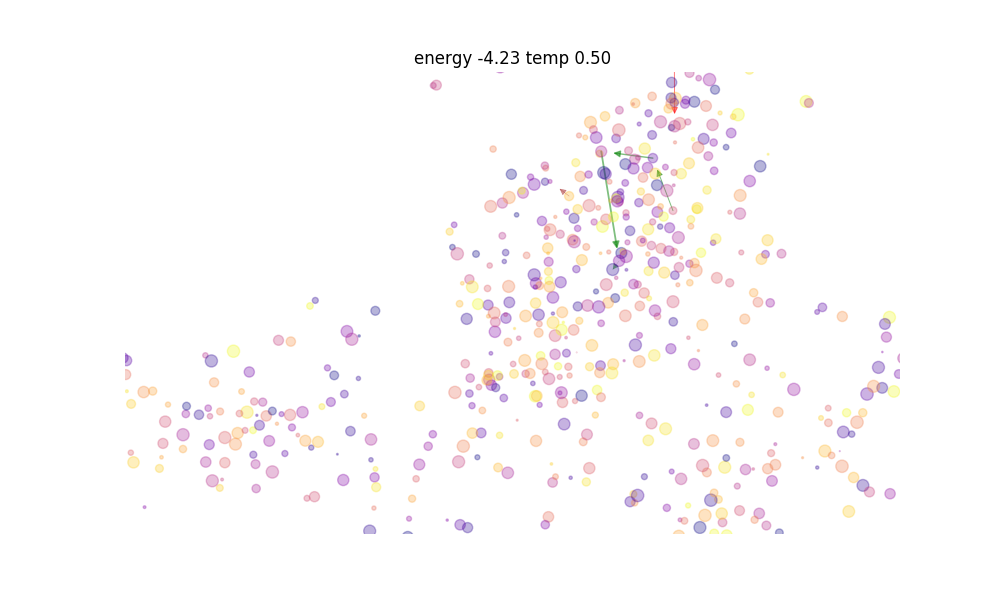
larger system
But after many iteration steps the solution is slowly approaching
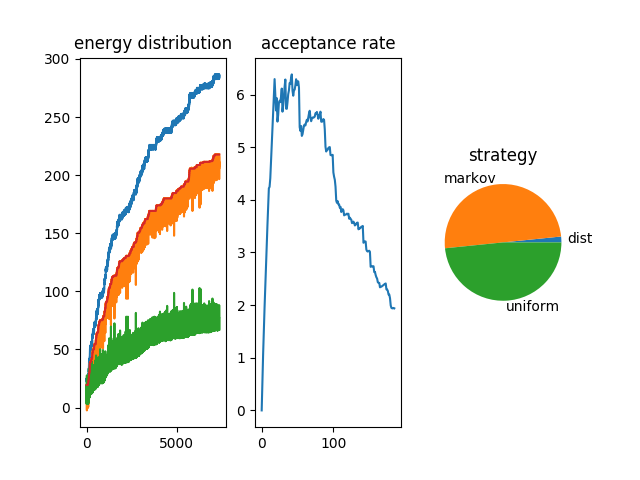
optimization energy, slowly learning
To improve the acceptance rate of moves we introduce Markov Chains
Markov schema
We multiply the Markov chain matrix with itself to condense iteration probabilities and set up a threshold to consider only the most important links
We calcualte at first a really dense Markov chain (first power) and we increase the power (until five) to have a sparse Markov chain
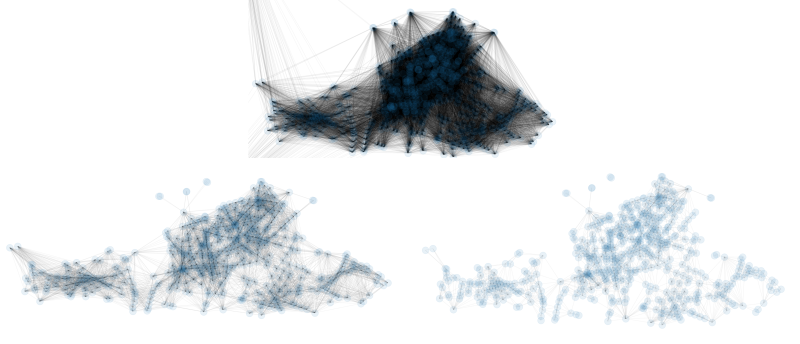
Markov chain densities
We than use a sparse Markov chain with around 7 links per node
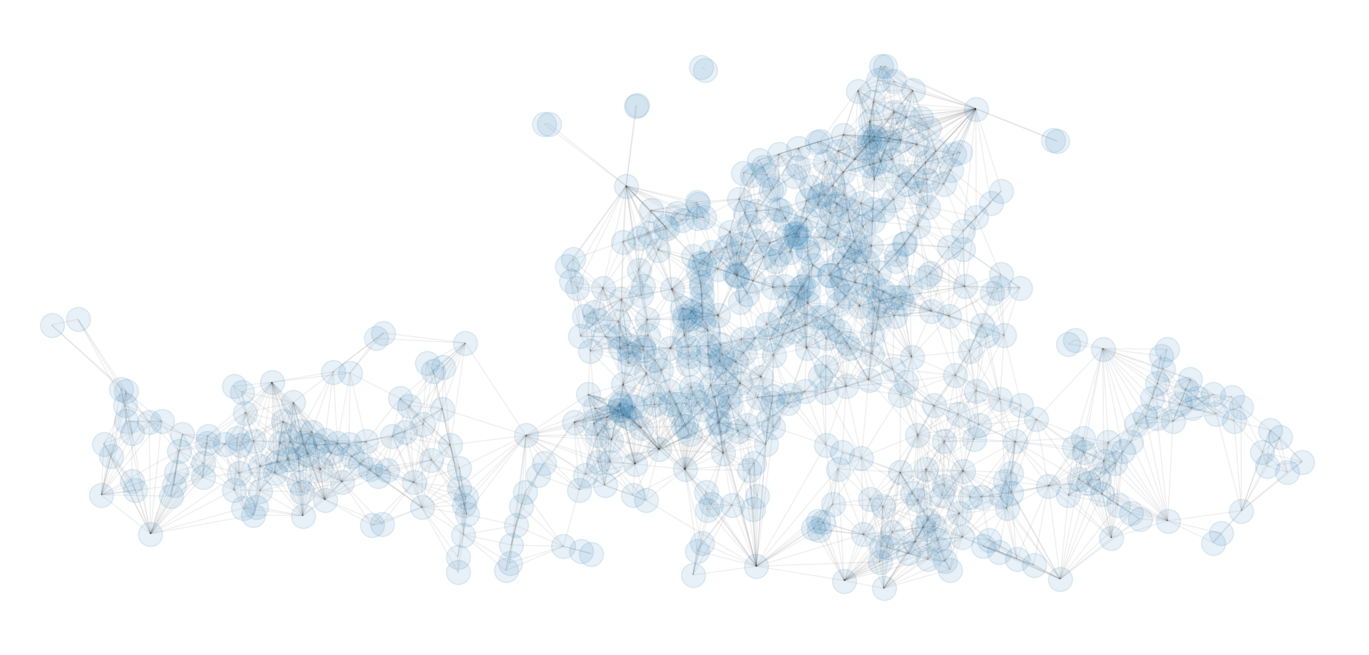
sparse markov chain
From the Markov chain we create a cumulative probability which is getting simpler while increasing the number of iterations

cumulative probability on filtering
We run over 500 spots and 8 drivers
 optimization 8 vans
optimization 8 vans
and iterate over different solutions
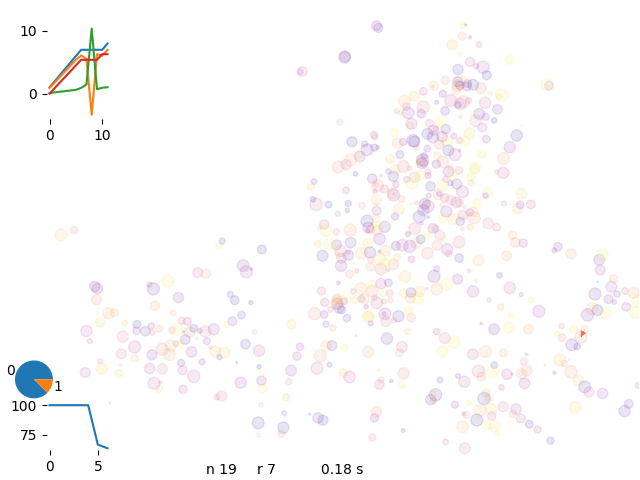
optimization 8 vans
We can control the energy evolution and check the aymptotic behaviour of the curves.
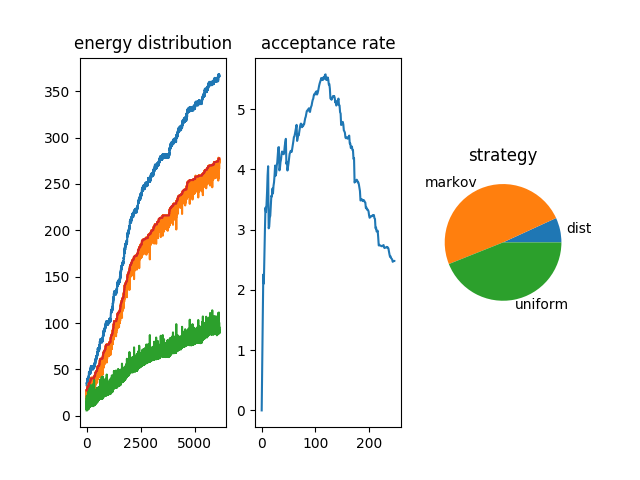
energy history with 8 vans
The engine was at first focusing on single task move which was making convergency pretty slow. We started than introducing new moves and initial set up
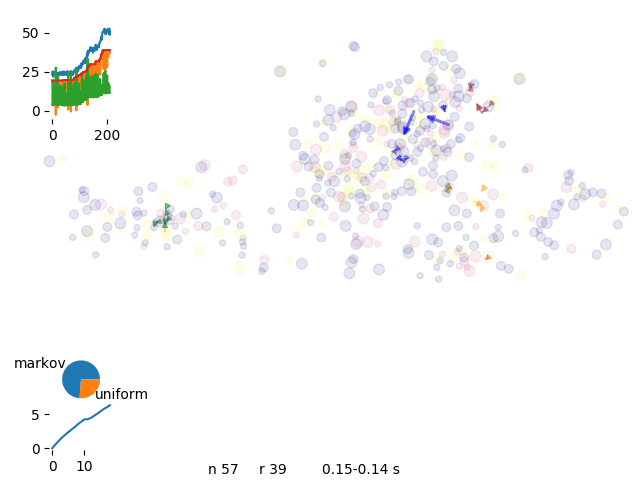
single spot move, solutions are a bit crowded
each driver start from a different k-mean cluster
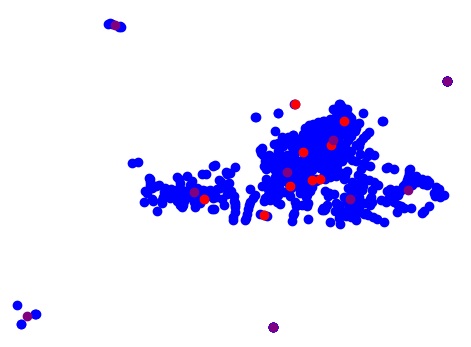
distribution of the closest spot to a cluster
We have than a better separation of routes
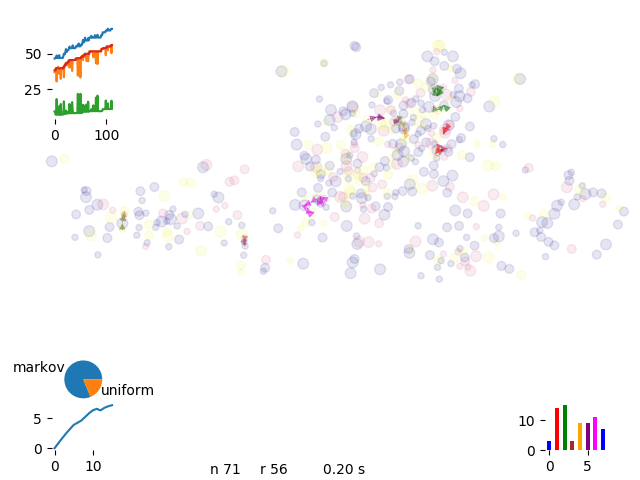
single markov chain

energy evolution for single move engine
We define a series of moves to re-sort ants across the network
series of moves
For speeding up operations we introduce a series of moves to improve run time and convergency.
Extruding is suggesting a chain following the Markov Chain probability

extrude move
With extrusion we dicrease calculation time to 1/10 getting to the same run time as routific.
We realize that sometimes some routes get trapped in a local minimum and we can’t get complete the occupancy of the van. Therefore we introduce phantom drivers so we have the option to discard uncomplete runs
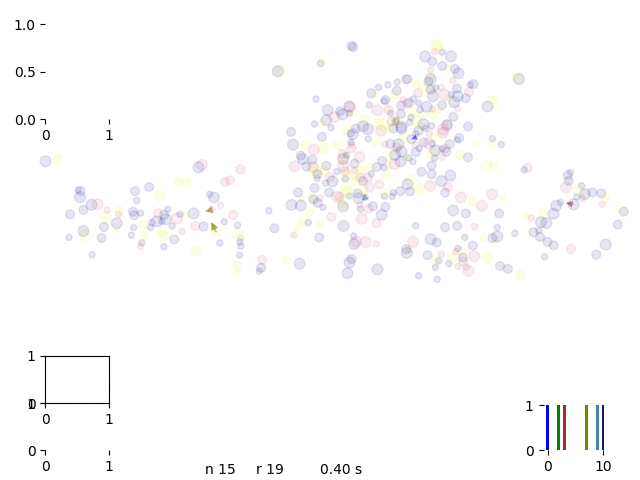
phantom move
Depending on the stage of the solution certain solutions are more appropriate than others
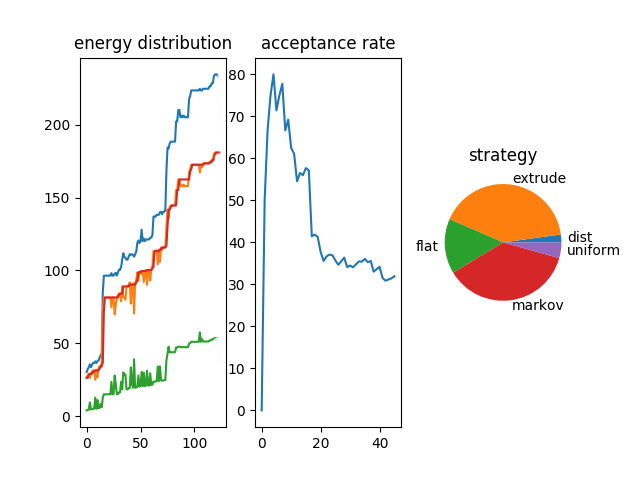
energy distribution for canonical simulations
To further improve convergence of solution we move to gran canonical simulation where we continously introduce and remove routes until we get to the best complete solution
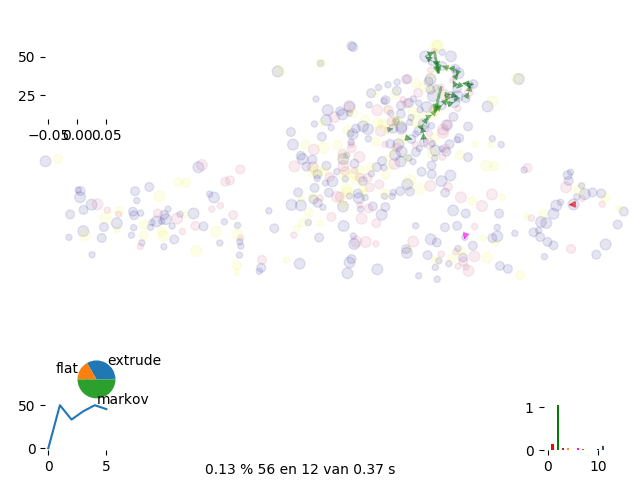
canonical move
